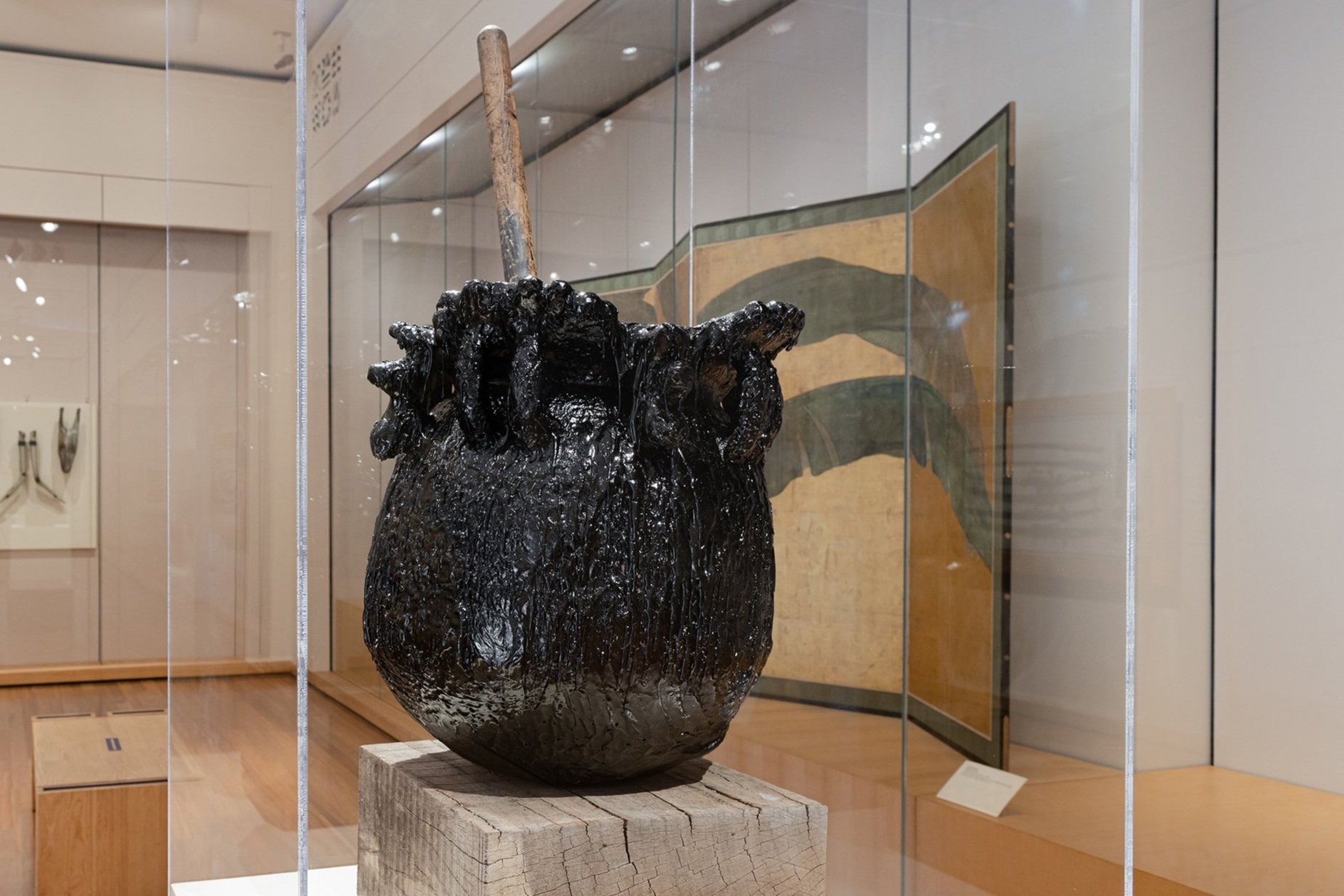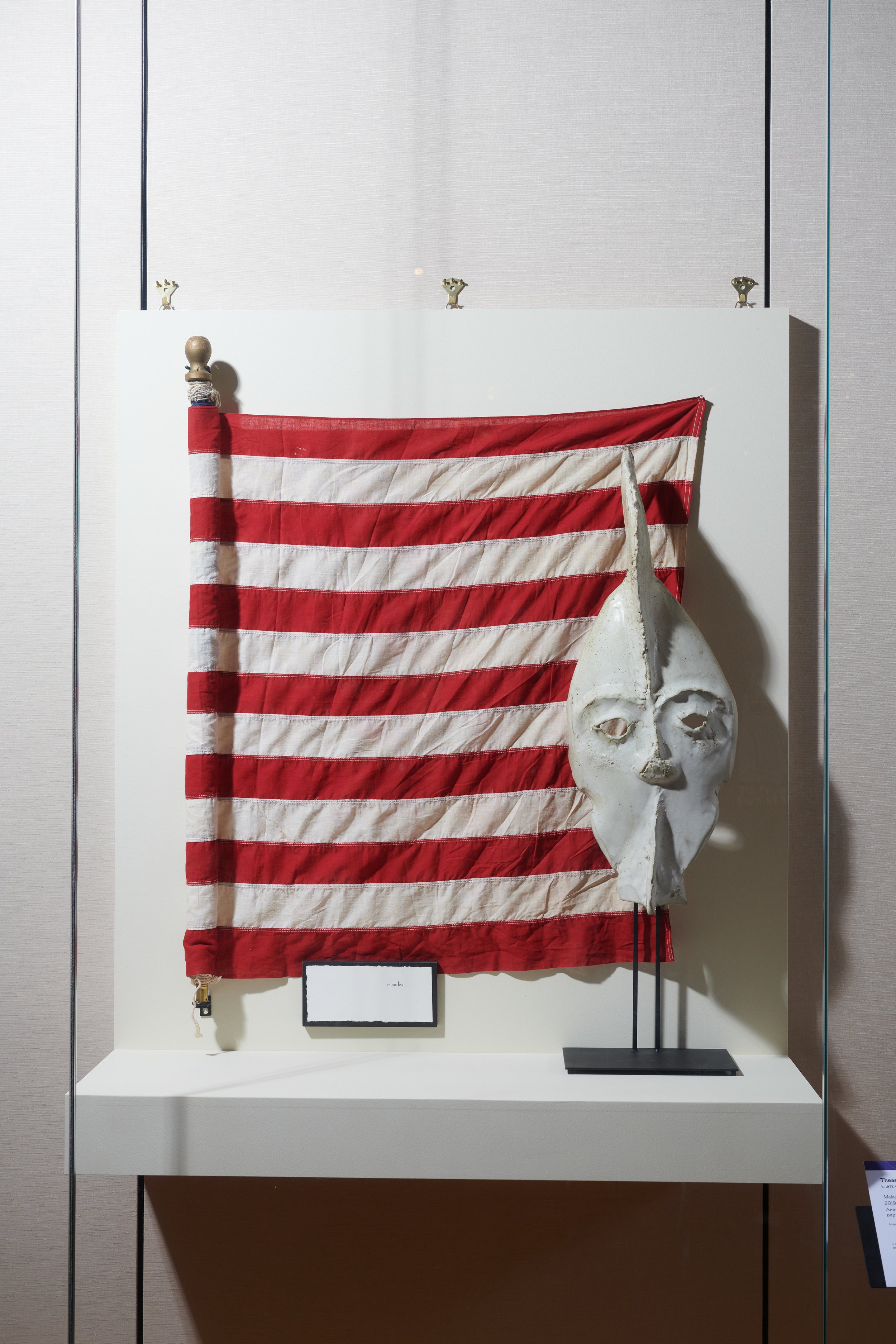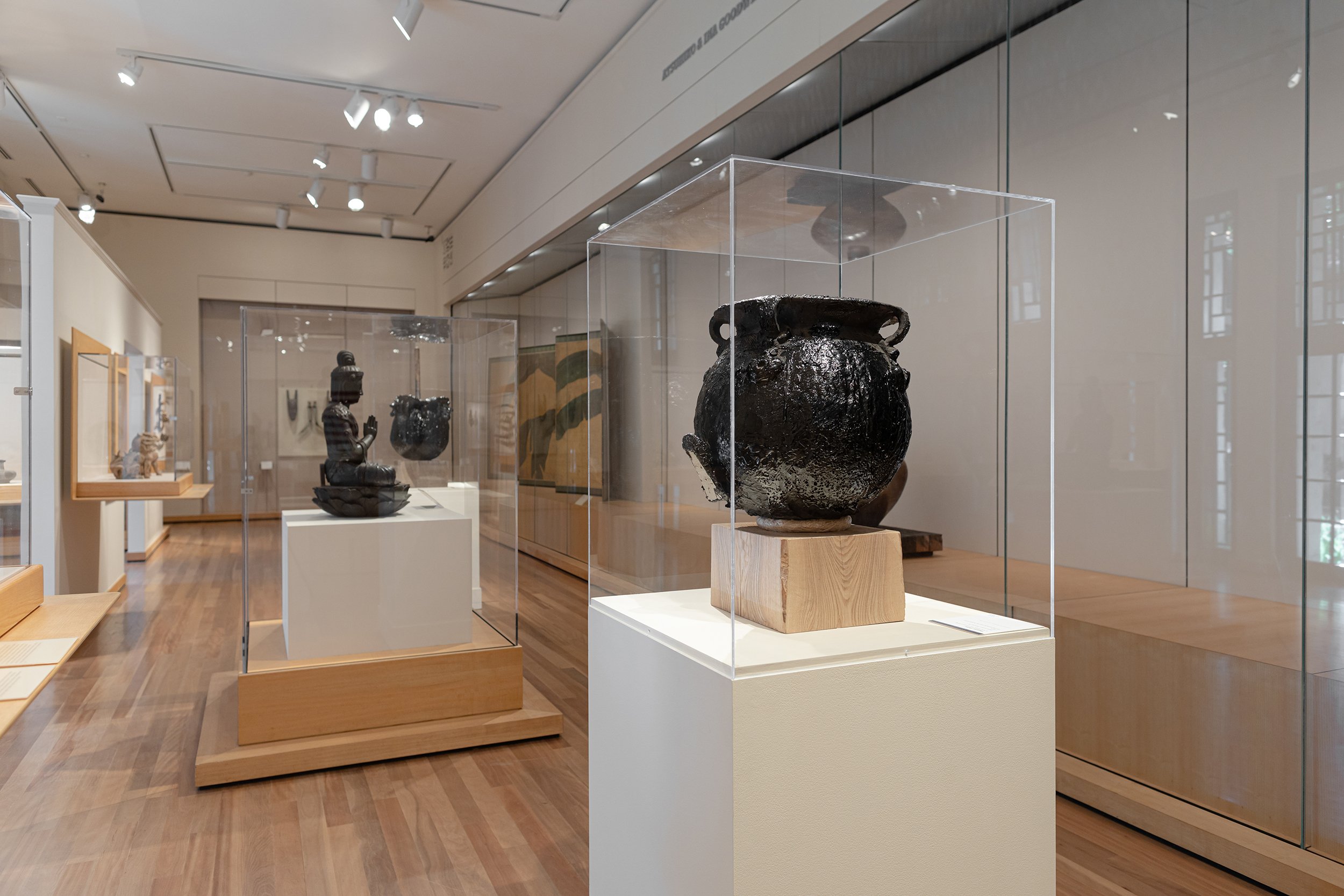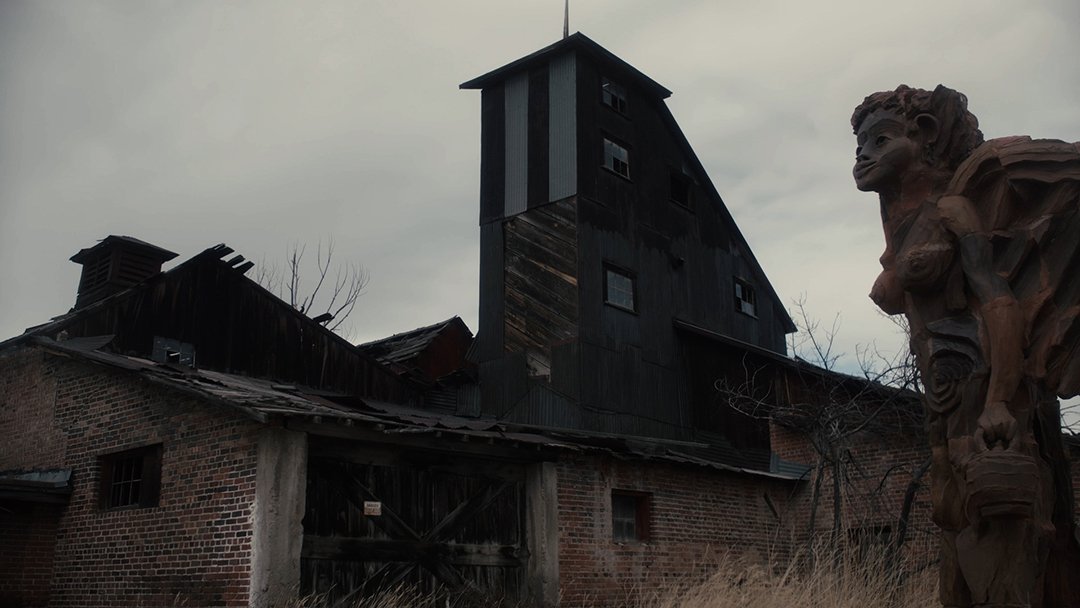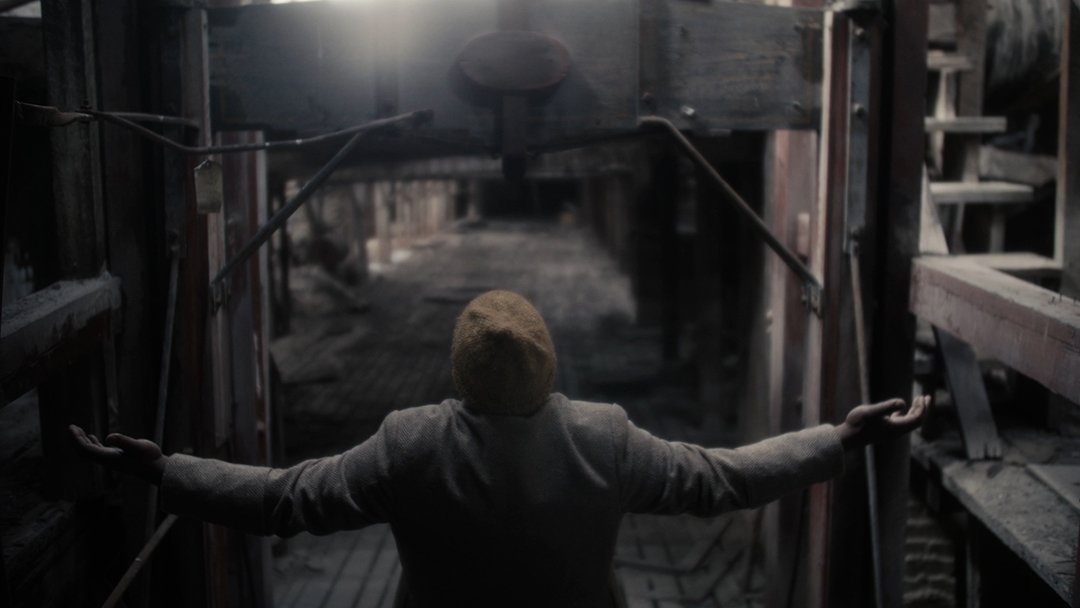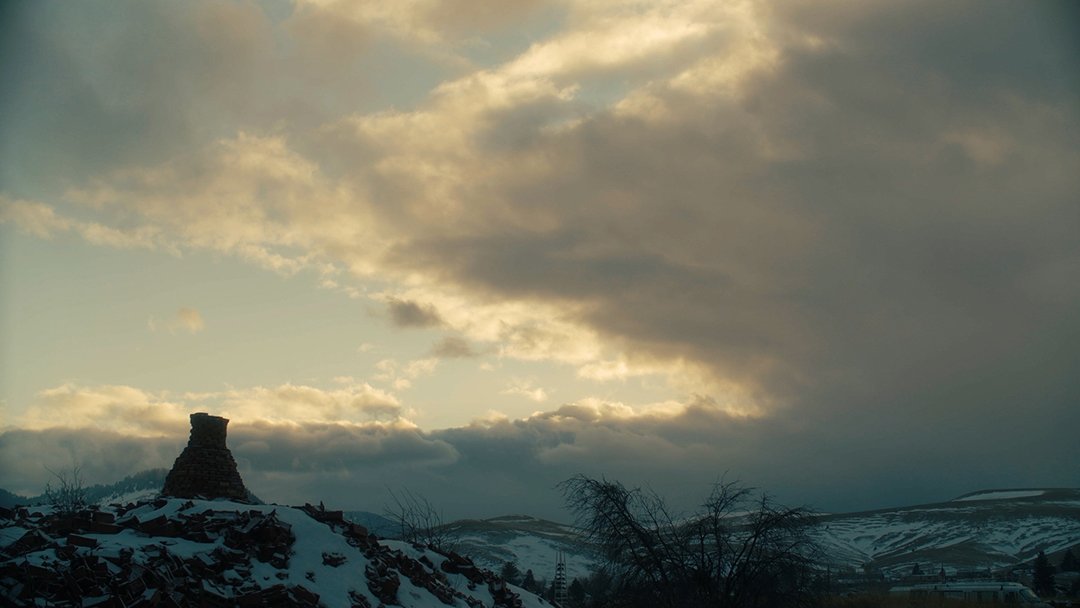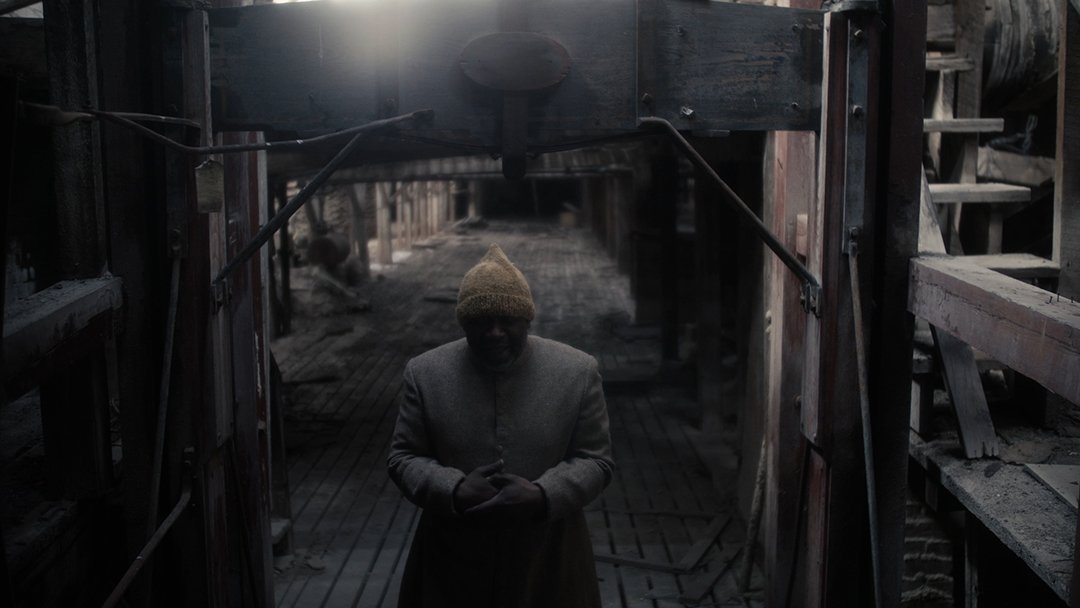hawai‘i triennial 2022
@ HONOLULU MUSEUM OF ART
Theaster Gates
b. 1973, Chicago
lives and works in Chicago
[TOP, FROM LEFT] Installation views: Theaster Gates, Preservation Exercise #2, 2021, earthenware jar and tar, azobé plinth; Malaga Vitrine #6, 2019, American flag, white bronze mask, and paper print; Preservation Exercise #4, 2021, Earthenware jar and tar, ash plinth; A Clay Sermon, 2021; Honolulu Museum of Art, HT22, Honolulu. Courtesy of the artist and Hawai ‘i Contemporary. Photos: Christopher Rohrer. Theaster Gates, A Clay Sermon (stills), 2021, single-channel video, 16 mins, 37 secs. Courtesy of the artist. © Theaster Gates.
Centered on ideas related to spatial theory and land ownership, Theaster Gates’ sculpture and performance practice stems from his background as an urban planner—he is interested in reconstructing notions of Blackness within the context of informal and formal architectural settings. Gates holds a MS in Urban Planning, Ceramics, and Religious Studies from Iowa State University, Ames; and an MA in Fine Arts from the University of Cape Town. In 2010 Gates created the Rebuild Foundation on Chicago’s South Side; a non-profit platform for art, cultural development, and neighborhood transformation that supports artists and strengthens communities through free arts programming and innovative cultural amenities. Perhaps Gates’ most ambitious projects are his social-practice entities, including Dorchester Art and Housing Collaborative (DAHC), his Chicago Arts + Industry Commons, The Stony Island Arts Bank, and B.A.R (Black Artist Retreat), all in Chicago.
Investigating alternative transcultural and transnational connections that go beyond the borders of the United States and the Black Atlantic (the cultural relationship between Africa, Europe, and the United States), Gates has explored other geographical routes such as those between Japan and the Black experience in the U.S., inspired by a series of research trips and encounters with makers across Japan, the first being a residency in Tokoname in 1999 where he studied with a group of master potters.
In 2007 Gates orchestrated the conceptual project Plate Convergence at the Hyde Park Art Center, Chicago, in which he presented a series of ceramic plates he had made as part of a para-fictional, post-World-War-II narrative conjured around the life of a protagonist, Japanese potter Shoji Yamaguchi. Gates’ construct sees Yamaguchi relocate to the southern state of Mississippi and marry a Black civil rights activist, for whom he subsequently creates a plate especially designed for serving Black cuisine and that also functions as the central nucleus for art and political debate during dinner parties.
Gates’ ongoing interest in ceramics and the aesthetic and philosophical relationship between Japan and the African-American cultural experience has culminated in his coining of the term ‘Afro-Mingei’. This portmanteau of the words afro, a symbol of identity and power, and mingei, the word given to the genre of work by unknown artisans and craftsmen in Japan, functions as an umbrella for research into cultural hybridity from a nuanced perspective, intentionally moving beyond binary thinking on race and society.
For HT22 Gates is exhibiting his film A Clay Sermon (2021) and a series of his tarred ceramic vessels—produced during a recent residency at the Archie Bray Foundation for the Ceramic Arts in Helena, Montana—as an intervention in the permanent-collection galleries, including those in the Japan gallery, of the Honolulu Museum of Art. Both are part of a continuing project that debuted at several venues in London in 2021 and will continue with Gate’s 2022 commission for the Serpentine Pavilion. In A Clay Sermon, Gates and his musical ensemble The Black Monks deliver a musical sermon that blends elements of gospel song with the improvisation of jazz music. Filmed in the former Western Clay Manufacturing Company Factory, an abandoned brick factory that is part of the Archie Bray Foundation, Gates speaks of a pilgrimage to Mino, Japan, and the beauty of oribe-style glazes. Archival footage from Gates’ career in pottery and performance is also featured, connecting the community and solidarity of Black American church music with the collaborative and spiritual nature of ceramic making.
Theaster Gates. Photo: John R. Boehm
Theaster Gates lives and works in Chicago. Gates creates works that engage with space theory and land development, sculpture and performance. Drawing on his interest and training in urban planning and preservation, Gates redeems spaces that have been left behind. Known for his recirculation of art- world capital, Gates creates work that focuses on the possibility of the “life within things.” His word contends with the notion of Black space as a formal exercise –one defined by collective desire, artistic agency, and the tactics of a pragmatist.
Gates has exhibited and performed at Tate Liverpool, UK (2020); Haus der Kunst, Munich (2020); Walker Art Centre, Minneapolis (2019); Palais de Tokyo Paris, France (2019) and many more. Gates is a professor at the University of Chicago in the Department of Visual Arts and the Harris School of Public Policy, and is Distinguished Visiting Artist and Director of Artist Initiatives at the Lunder Institute for American Art at Colby College.


